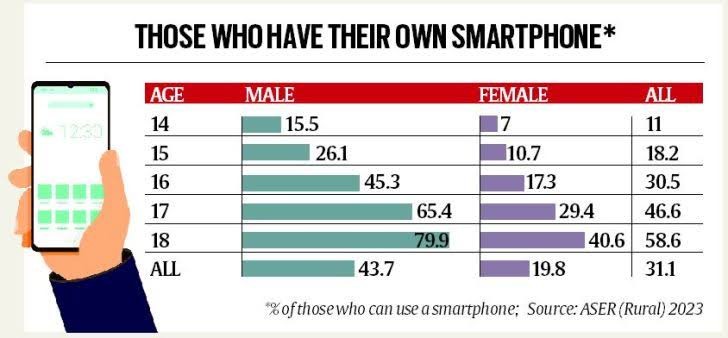
The Annual Status of Education Report (ASER) 2023

19.01.2024
The Annual Status of Education Report (ASER) 2023 , Daily Current Affairs , RACE IAS : Best IAS Coaching in Lucknow
|
For Prelims:About the Annual Status of Education Report (ASER) 2023,Findings of the ASER 2023,Significance of the ASER 2023 |
Why in the news?
According to the ASER 2023, nearly 43% of children in the 14-18 age group cannot read sentences in English, while among their rural counterparts, 25% struggle to read a Class 2 level text in their respective regional language.
About the Annual Status of Education Report (ASER) 2023:
- ASERs (by NGO Pratham) have been surveying children aged 6 to 14 since 2005 to track trends in school enrollment, attendance and reading and arithmetic abilities.
○ASER reports are usually referred to by the government while formulating policies.
- The ASER 2023 is based on a survey conducted in 28 districts across 26 states, reaching out to 34,745 youths in the 14-18 age group.
○One rural district was surveyed in each major state with the exception of Uttar Pradesh and Madhya Pradesh, where two such districts were surveyed.
The youths were surveyed on 4 points –
○Basic reading, math and English abilities;
○Application of basic skills to everyday calculations;
○Reading and understanding written instructions; and
○Financial calculations that need to be done in real life.
Findings of the ASER 2023:
Trends on basic learning:
- Overall (of those aged 14-18), a quarter (26.5%) could not read a Class 2-level textbook in their regional language, and a little less than half (42.7%) could not read sentences in English.
- Of those who can read these sentences, over a quarter (26.5%) did not understand the meaning of what they were reading.
- Basic mathematics remains the big challenge. More than half of the surveyed students (56.7%) could not solve a simple 3-digit by 1-digit division problem.
- The ability to do division is seen as a proxy for the ability to do basic arithmetic operations.
Arithmetic proficiency:
- 45% of youths in the surveyed group have basic arithmetic proficiency.
- The rest need to ‘catch up’ as low levels of foundational numeracy affect the ability of youth in tackling everyday calculations (say, for financial computations).
- Application of basic skills to everyday calculations:
- 85% of surveyed youths can measure length using a scale when the starting point is 0 cm but this drops sharply to 39% when the starting point is moved.
- This showed a decline as compared with 2017 when it was 86% and 40%. Males do better than females across all everyday calculations.
Enrollment in different streams:
- The survey shows that more than half (55.7%) of the young people in this age group were enrolled in the Arts/Humanities stream, followed by STEM (31.7%) and Commerce (9.4%).
- More males report enrolling in the STEM stream (36.3%) than females (28.1%).
Use of smartphones:
- Around 89% of those surveyed had a smartphone in the household and 92% said they knew how to use it - signalling a shift that has gathered force in the pandemic years and after.
- However, males were more than twice as likely to own their own smartphone than females, and therefore were likely spending far more time using the device for a wider variety of tasks.
Use of social media:
- Interestingly, the survey found that 90.5% of the youths in this age group reported having used social media in the reference week, with a slightly higher proportion of males (93.4%) than females (87.8%).
- However, it observed that “of all youths who used social media, only about half are familiar with online safety settings that were included in the survey”.
Significance of the ASER 2023:
- For nearly two decades, ASER reports have consistently pointed to deficiencies among children in elementary school with regard to foundational skills like reading and basic arithmetic.
- But this year’s focus on an older age group also points to a similar gap in learning outcomes at higher levels.
- The report reveals that children continue to struggle with basic reading and arithmetic skills well into their teenage years, even after reaching Class 10 and higher secondary levels of education (Classes 11 and 12).
- The findings point to a huge skill deficit among adolescents, many of them only a few years away from entering the job market.
Source: Indian Express